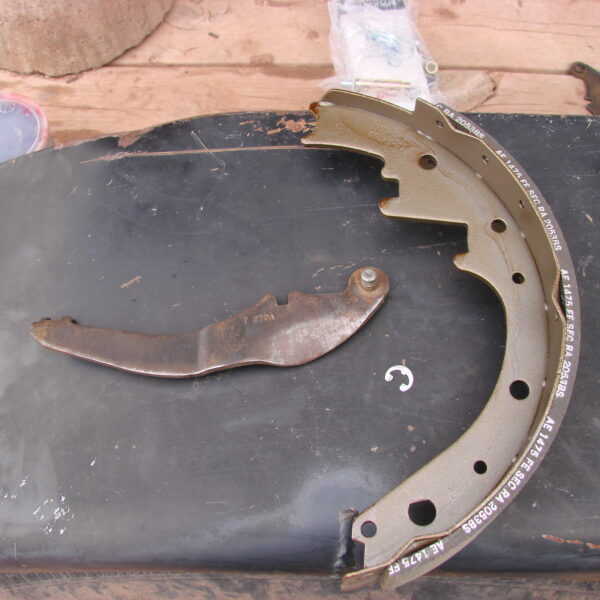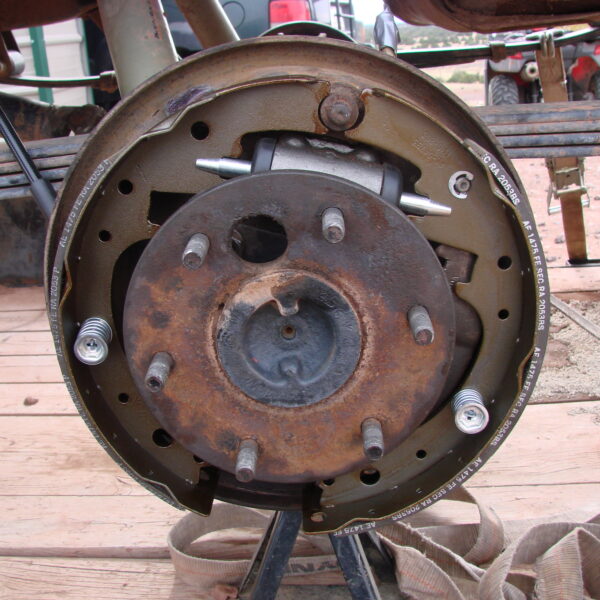In time all components are in need of replacement and need to be upgraded or preventive maintained. Brakes can often be one of the most over looked components on a vehicle, out of site, out of mind. Since we did the Dana 44 axle swap and most of the brakes parts were damaged or lost on the trail it was time to go ahead and get these old drums back up to par. Now the preferred route would have been to upgrade to a disc brake kit for the rear but as in many cases, finances just didn’t allow so for now it will have to be drums, they will no doubt work better than they did.
Unfortunately some of the pictures for this job were lost, we will do our best to walk you through with what we have but with any Chilton or Haynes manual you should have plenty of pictures in addition to these.
As stated in the axle swap I find that if there are two sides of anything that you may be working on it is best to do one side at a time so you will always have a reference to go by. Sometimes even the best manuals don’t give as good of a description or idea of what you are working on. Being able to look at one just like it in front of you can many times give you a better understanding.
Once you have all of your new parts laid out in front of you take a minute to look them over and identify that you have all you need to complete the job and that the new parts are the same as the old. It may sound obvious but when you have to buy the parts separately it is easy to over look even one part that can send you back to the parts store and keep you from getting the job done that much sooner.
First off we installed a new wheel cylinder, with that in place we just did a little scrubbing away of old dirt and rust in the area of our contact points and any areas that may have had any build up.
Once things are cleaned up we put a little high temp grease on the contact points of the backing plate before we begin to install the remaining parts.
Attach the new shoe to the parking brake lever, install the spring, washer and retaining clip on the pivot pin and then crimp the clip closed with a pair of pliers. Next you’ll install the secondary shoe and hold down spring to the backing plate, with that done the parking brake lever and link will need to be positioned with the notches aligned and connecting together.
From there it is a matter of connecting the springs to everything; this is where having the opposite side to look at can come in very handy. The manuals never specify which spring goes where and since they are all specific colors it helps to be able to refer the other side for certainty. You will also want to put a little multi purpose grease on the adjusting screw before you put it all back together for lubrication to assure it adjusts when you need it to.
You want to adjust the shoes out so the drum barely fits over them and onto the studs; final adjustment will be done through the hole at the bottom of the backing plate.
With the drum in place you will use a screwdriver or a brake adjusting tool to turn the adjuster wheel upwards until the shoes drag on the brake drum; then, insert a small screwdriver through the backing plate to move the adjuster lever away from the adjuster wheel and turn the wheel in the opposite direction until the drum turns freely without dragging on the drum.

















